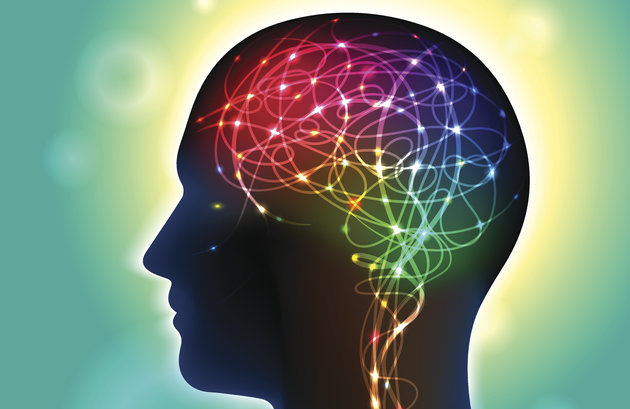Blog
- ADHD Improperly Diagnosed in Children
- By Jason von Stietz, M.A.
- October 30, 2015
-

Getty Images What is causing the rise in children being diagnosed with ADHD? Is it that the modern educational environment requires more of children, which makes it harder for ADHD to go unnoticed? Is it the exposure to chemicals in our environment or the processed sugar in our diet. A study by the Center for Disease Control and Prevention found that ADHD is often improperly diagnosed. The findings were discussed in an article by the Washington Post:
All sorts of theories have been proposed to explain the alarming rise -- 6.4 million in 2011, a 42 percent jump from 2004 -- in schoolchildren being diagnosed with Attention-Deficit/Hyperactivity Disorder, or ADHD, requiring therapy, medicine or both to make it through their day.
Some believe it's simply a matter of more awareness (and paranoia) -- meaning that more parents are seeking a diagnosis. Others wonder if it's schools (they're more academic now than in the past, requiring kids to sit still for longer periods of time making those who have ADHD more obvious).
Still others blame the environment (all those chemicals we use). Or diet (yet another thing to blame on processed sugar).
The CDC report takes an in-depth look at how children with ADHD came to get the label through a survey of 2,976 families. While in the majority of cases health care providers followed American Academy of Pediatrics guidelines when making a diagnosis, there was still a large number of children for whom these practices weren't followed.
In 18 percent of cases, the diagnosis was done solely on the basis of family members' reports, which is inconsistent with AAP recommendations that information be collected from individuals across multiple settings -- such as a teacher, piano instructor, or sports coach. Additionally, one out of every 10 children was diagnosed without the use of a behavior rating scale that is supposed to be administered.
The study also shows that children are getting diagnosed at an earlier age, with half being diagnosed at age 6 or below: 17.1 percent at age 6, 14.6 percent at age 5, and 16 percent at age 4 or younger.
Read the original article Here
- Comments (0)
- High Connectivity Related to Positive Traits
- By Jason von Stietz, M.A.
- October 17, 2015
-

Getty Images Researchers involved in the Human Connectome Project made a surprising discovery when examining the relationship between brain connectivity during a resting state and several factors such as education, socioeconomic status, substance use, and personality traits. It was found that, overall, positive traits related to increased connectivity whereas negative traits related to decreased connectivity. Those with more highly connected brains were more likely to be more highly educated and perform better on memory tests. Those with less brain connectivity were more likely to smoke and have more aggressive personalities. The study and it’s implications were discussed in a recent article in Scientific American:
The brain’s wiring patterns can shed light on a person’s positive and negative traits, researchers report in Nature Neuroscience. The finding, published on September 28, is the first from the Human Connectome Project (HCP), an international effort to map active connections between neurons in different parts of the brain.
The HCP, which launched in 2010 at a cost of US$40 million, seeks to scan the brain networks, or connectomes, of 1,200 adults. Among its goals is to chart the networks that are active when the brain is idle; these are thought to keep the different parts of the brain connected in case they need to perform a task.
In April, a branch of the project led by one of the HCP's co-chairs, biomedical engineer Stephen Smith at the University of Oxford, UK, released a database of resting-state connectomes from about 460 people between 22 and 35 years old. Each brain scan is supplemented by information on approximately 280 traits, such as the person's age, whether they have a history of drug use, their socioeconomic status and personality traits, and their performance on various intelligence tests.
Axis of connectivity
Smith and his colleagues ran a massive computer analysis to look at how these traits varied among the volunteers, and how the traits correlated with different brain connectivity patterns. The team was surprised to find a single, stark difference in the way brains were connected. People with more 'positive' variables, such as more education, better physical endurance and above-average performance on memory tests, shared the same patterns. Their brains seemed to be more strongly connected than those of people with 'negative' traits such as smoking, aggressive behaviour or a family history of alcohol abuse.Marcus Raichle, a neuroscientist at Washington University in St Louis, Missouri, is impressed that the activity and anatomy of the brains alone were enough to reveal this 'positive-negative' axis. “You can distinguish people with successful traits and successful lives versus those who are not so successful,” he says.
But Raichle says that it is impossible to determine from this study how different traits relate to one another and whether the weakened brain connections are the cause or effect of negative traits. And although the patterns are clear across the large group of HCP volunteers, it might be some time before these connectivity patterns could be used to predict risks and traits in a given individual. Deanna Barch, a psychologist at Washington University who co-authored the latest study, says that once these causal relationships are better understood, it might be possible to push brains toward the 'good' end of the axis.
Van Wedeen, a neuroscientist at Massachusetts General Hospital in Boston, says that the findings could help to prioritize future research. For instance, one of the negative traits that pulled a brain farthest down the negative axis was marijuana use in recent weeks. Wedeen says that the finding emphasizes the importance of projects such as one launched by the US National Institute on Drug Abuse last week, which will follow 10,000 adolescents for 10 years to determine how marijuana and other drugs affect their brains.
Wedeen finds it interesting that the wiring patterns associated with people's general intelligence scores were not exactly the same as the patterns for individual measures of cognition—people with good hand–eye coordination, for instance, fell farther down the negative axis than did those with good verbal memory. This suggests that the biology underlying cognition might be more complex than our current definition of general intelligence, and that it could be influenced by demographic and behavioural factors. “Maybe it will cause us to reconsider what [the test for general intelligence] is measuring,” he says. “We have a new mystery now.”
Much more connectome data should emerge in the next few years. The Harvard Aging Brain Study, for instance, is measuring active brain connections in 284 people aged between 65 and 90, and released its first data earlier this year. And Smith is running the Developing Human Connectome Project in the United Kingdom, which is imaging the brains of 1,200 babies before and after birth. He expects to release its first data in the next few months. Meanwhile, the HCP is analysing genetic data from its participants, which include a large number of identical and fraternal twins, to determine how genetic and environmental factors relate to brain connectivity patterns.
See the original article Here
- Comments (0)
- Possible "Depression Switch" to Guide Deep Brain Stimulation
- By Jason von Stietz, M.A.
- October 10, 2015
-

Photo Credit: Getty Images Researchers at Emory University School of Medicine studied the impact of deep brain stimulation on chronic and treatment resistant depression. Findings may provide researchers with a structural “depression switch” that may guide the use of deep brain stimulation in the future. The study was discussed in a recent article in MedicalXpress:
A "depression switch" has been mapped during intraoperative deep brain stimulation of the subcallosal cingulate, according to research published online Sept. 26 in JAMA Neurology.
Ki Sueng Choi, Ph.D., from the Emory University School of Medicine in Atlanta, and colleagues characterized the structural connectivity correlates of deep brain stimulation-evoked behavior effects using probabilistic tractography in depression. Data were included for nine adults undergoing deep brain stimulation implantation surgery for chronic treatment-resistant depression.
The researchers recorded 72 active and 36 sham trials among the patients. Stereotypical behavior patterns included changes in interoceptive and in exteroceptive awareness. For all nine patients, the best response was a combination of exteroceptive and interoceptive changes at a single left contact. The best response contacts had a pattern of connections to the bilateral ventromedial frontal cortex (via forceps minor and left uncinate fasciculus) and to the cingulate cortex (via left cingulum bundle); only cingulate involvement was seen in behaviorally salient but non-best contacts.
"This analysis of transient behavior changes during intraoperative deep brain stimulation of the subcallosal cingulate and the subsequent identification of unique connectivity patterns may provide a biomarker of a rapid-onset depression switch to guide surgical implantation and to refine and optimize algorithms for the selection of contacts in long-term stimulation for treatment-resistant depression," the authors write.
Two authors disclosed financial ties to medical device companies, including Medtronic and St. Jude Medical, both of which develop products related to the research in this article. St. Jude Medical also donated the study device.
Read the original article Here
- Comments (0)
- Study Links Optimism, Anxiety, and Orbitifrontal Cortex Size
- By Jason von Stietz, M.A.
- October 3, 2015
-

Photo Credit: Getty Images Can optimism be traced to a structure in the brain? Researchers at the University of Illinois have linked optimism, anxiety, and the orbitofrontal cortex (OFC). Their study found that those with a larger OFC tend to report more optimism and less anxiety. The study was discussed in a recent article in MedicalXpress:
The new analysis, reported in the journal Social, Cognitive and Affective Neuroscience, offers the first evidence that optimism plays a mediating role in the relationship between the size of the OFC and anxiety.
Anxiety disorders afflict roughly 44 million people in the U.S. These disorders disrupt lives and cost an estimated $42 billion to $47 billion annually, scientists report.
The orbitofrontal cortex, a brain region located just behind the eyes, is known to play a role in anxiety. The OFC integrates intellectual and emotional information and is essential to behavioral regulation. Previous studies have found links between the size of a person's OFC and his or her susceptibility to anxiety. For example, in a well-known study of young adults whose brains were imaged before and after the colossal 2011 earthquake and tsunami in Japan, researchers discovered that the OFC actually shrank in some study subjects within four months of the disaster. Those with more OFC shrinkage were likely to also be diagnosed with post-traumatic stress disorder, the researchers found.
Other studies have shown that more optimistic people tend to be less anxious, and that optimistic thoughts increase OFC activity.
The team on the new study hypothesized that a larger OFC might act as a buffer against anxiety in part by boosting optimism.
Most studies of anxiety focus on those who have been diagnosed with anxiety disorders, said University of Illinois researcher Sanda Dolcos, who led the research with graduate student Yifan Hu and psychology professor Florin Dolcos. "We wanted to go in the opposite direction," she said. "If there can be shrinkage of the orbitofrontal cortex and that shrinkage is associated with anxiety disorders, what does it mean in healthy populations that have larger OFCs? Could that have a protective role?"
The researchers also wanted to know whether optimism was part of the mechanism linking larger OFC brain volumes to lesser anxiety.
The team collected MRIs of 61 healthy young adults and analyzed the structure of a number of regions in their brains, including the OFC. The researchers calculated the volume of gray matter in each brain region relative to the overall volume of the brain. The study subjects also completed tests that assessed their optimism and anxiety, depression symptoms, and positive (enthusiastic, interested) and negative (irritable, upset) affect.
A statistical analysis and modeling revealed that a thicker orbitofrontal cortex on the left side of the brain corresponded to higher optimism and less anxiety. The model also suggested that optimism played a mediating role in reducing anxiety in those with larger OFCs. Further analyses ruled out the role of other positive traits in reducing anxiety, and no other brain structures appeared to be involved in reducing anxiety by boosting optimism.
"You can say, 'OK, there is a relationship between the orbitofrontal cortex and anxiety. What do I do to reduce anxiety?'" Sanda Dolcos said. "And our model is saying, this is working partially through optimism. So optimism is one of the factors that can be targeted."
"Optimism has been investigated in social psychology for years. But somehow only recently did we start to look at functional and structural associations of this trait in the brain," Hu said. "We wanted to know: If we are consistently optimistic about life, would that leave a mark in the brain?"
Florin Dolcos said future studies should test whether optimism can be increased and anxiety reduced by training people in tasks that engage the orbitofrontal cortex, or by finding ways to boost optimism directly.
"If you can train people's responses, the theory is that over longer periods, their ability to control their responses on a moment-by-moment basis will eventually be embedded in their brain structure," he said.
Read the full article Here
- Comments (0)


 Subscribe to our Feed via RSS
Subscribe to our Feed via RSS